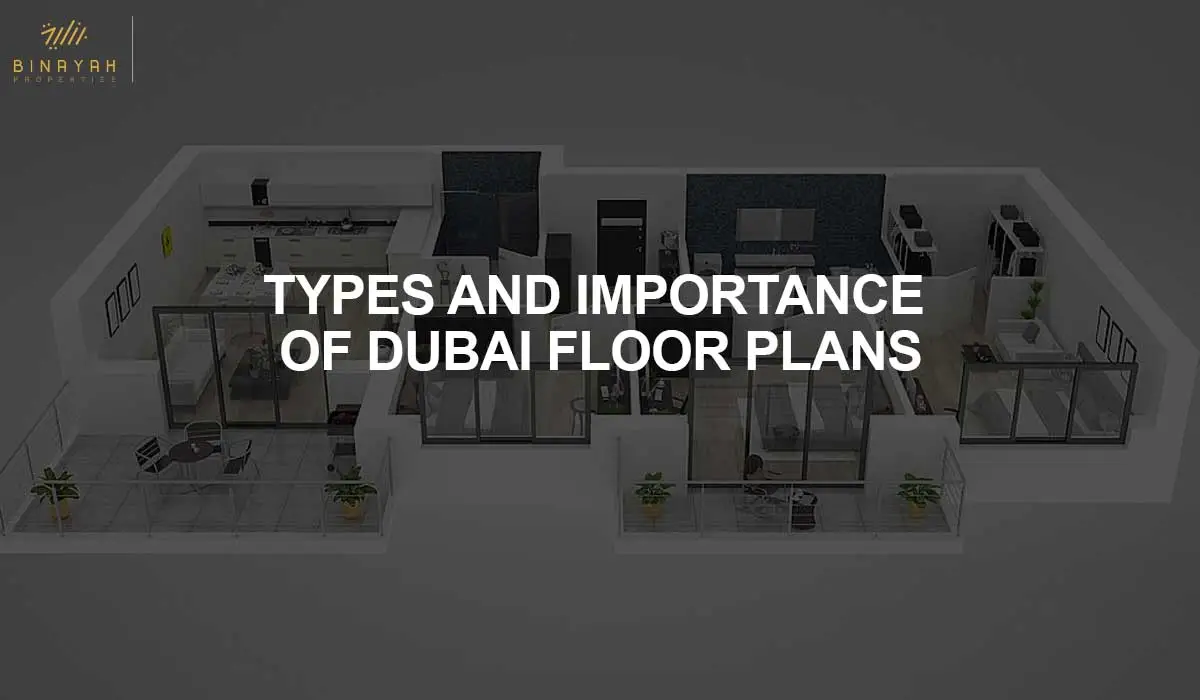Dubai, a jewel in the crown of the United Arab Emirates, is renowned for its towering skyscrapers, luxurious properties, and innovative urban planning. With its thriving real estate market, Dubai stands as a beacon of architectural excellence and modern living. In this blog, we delve into the significance of floor plans in Dubai‘s real estate landscape, their types, and their importance in shaping the city’s dynamic skyline.
What is a Floor Plan?
A floor plan is a detailed diagram that illustrates a property’s layout and spatial arrangement, showcasing the dimensions, room configurations, and structural features. It serves as a visual representation of how the space within a building is organized, providing valuable insights into the flow and functionality of the property.
Types of Floor Plans in Dubai:
Here we have 4 types of Dubai Floor plans:
- Traditional Floor Plans: These are the most common types, depicting the layout of rooms, walls, and architectural elements straightforwardly.
- 3D Floor Plans: Utilizing advanced technology, 3D floor plans offer a more immersive experience, allowing prospective buyers to visualize the property in a realistic three-dimensional environment.
- Virtual Reality Floor Plans: Leveraging virtual reality (VR) technology, these floor plans provide an interactive experience, enabling users to explore the property as if they were physically present, enhancing engagement and decision-making.
- Furnished vs. Unfurnished Floor Plans: Some floor plans showcase the property with furnishings, giving potential buyers a sense of scale and design possibilities, while others present the space in its bare form, focusing solely on the layout and structure.
Importance of Floor Plans:
- Enhanced Visualization: Floor plans enable potential buyers to envision themselves within the space, helping them understand the flow and functionality of the property before making a decision.
- Effective Space Utilization: By clearly delineating the layout of rooms and amenities, floor plans optimize the use of available space, ensuring efficient and practical living or working environments.
- Facilitate Decision-Making: Whether for residential or commercial purposes, detailed floor plans empower buyers and tenants to make informed decisions based on their specific needs and preferences.
- Streamlined Communication: Floor plans serve as a universal language in the real estate industry, facilitating clear communication between architects, designers, developers, and clients, ensuring alignment and accuracy throughout the construction process.
Conclusion:
In Dubai’s thriving real estate market, floor plans play a pivotal role in shaping the landscape and driving investment. From traditional blueprints to immersive virtual reality experiences, the diverse Dubai floor plan options cater to the needs and preferences of discerning buyers and tenants. By providing valuable insights into spatial arrangement and functionality, floor plans serve as indispensable tools for decision-making and visualization, contributing to the continued growth and prosperity of Dubai’s dynamic urban environment. For further updates, visit binayah.com




